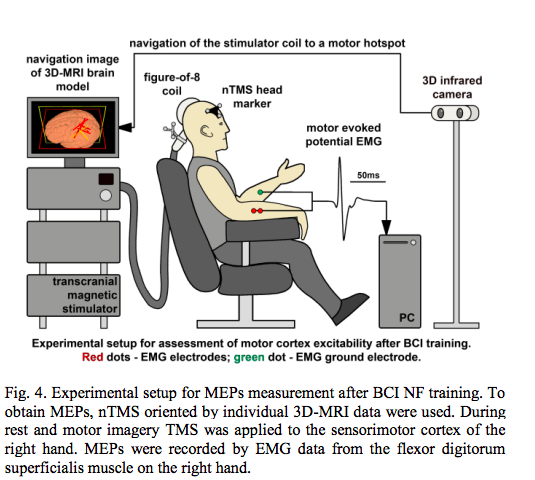In this study, we address the issue of whether vibrotactile feedback can enhance the motor cortex excitability translated into the plastic changes in local cortical areas during motor imagery (MI) BCI-based training. For this purpose, we focused on two of the most notable neurophysiological effects of MI – the event-related desynchronization (ERD) level and the increase in cortical excitability assessed with navigated transcranial magnetic stimulation (nTMS). For TMS navigation, we used individual high-resolution 3D brain MRIs. Ten BCI-naive and healthy adults participated in this study. The MI (rest or left/right hand imagery using Graz-BCI paradigm) tasks were performed separately in the presence and absence of feedback. To investigate how much the presence/absence of vibrotactile feedback in MI BCI-based training could contribute to the sensorimotor cortical activations, we compared the MEPs amplitude during MI after training with and without feedback. In addition, the ERD levels during MI BCI-based training were investigated. Our findings provide evidence that applying vibrotactile feedback during MI training leads to (i) an enhancement of the desynchronization level of mu-rhythm EEG patterns over the contralateral motor cortex area corresponding to the MI of the non-dominant hand; (ii) an increase in motor cortical excitability in hand muscle representation corresponding to a muscle engaged by the MI.

